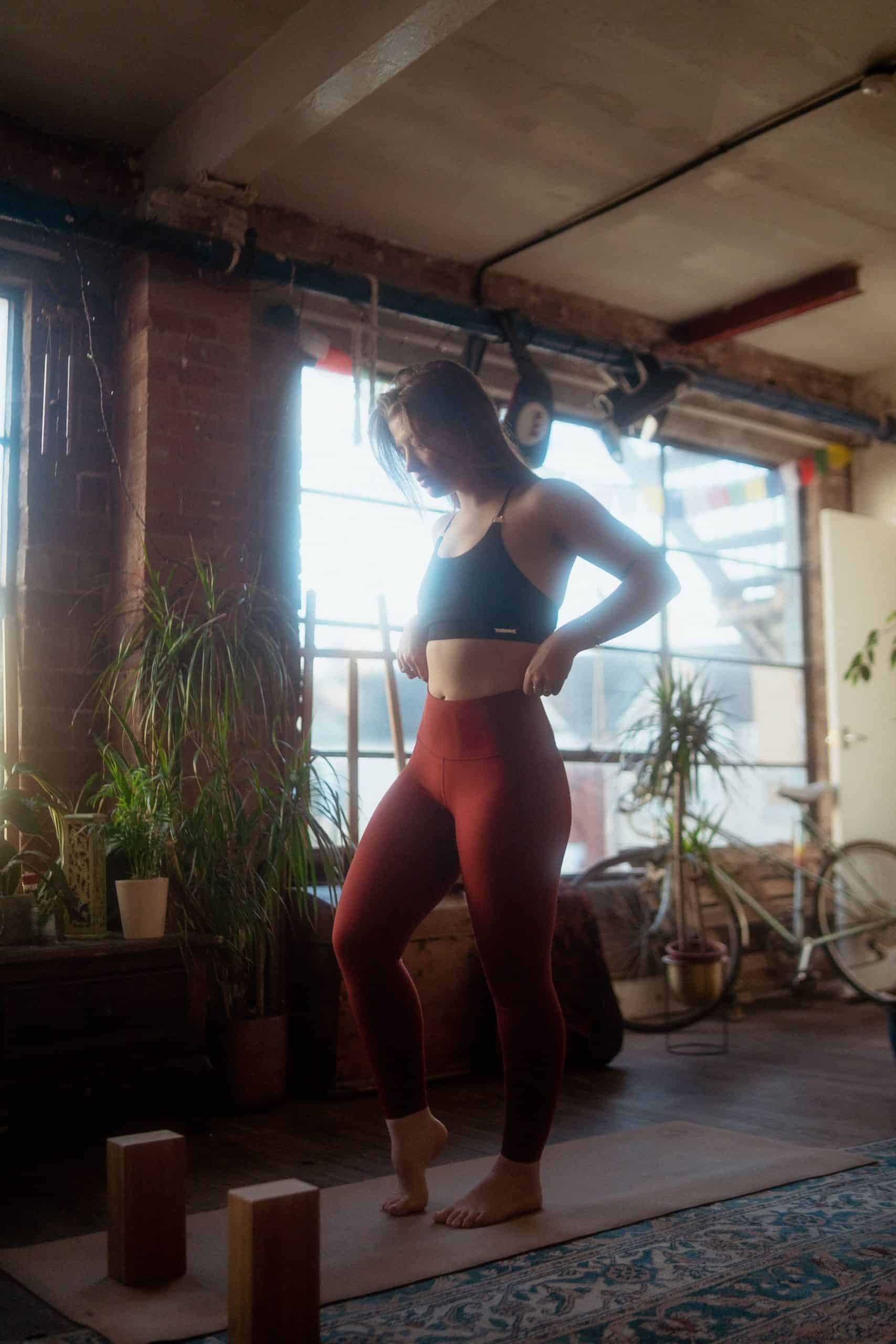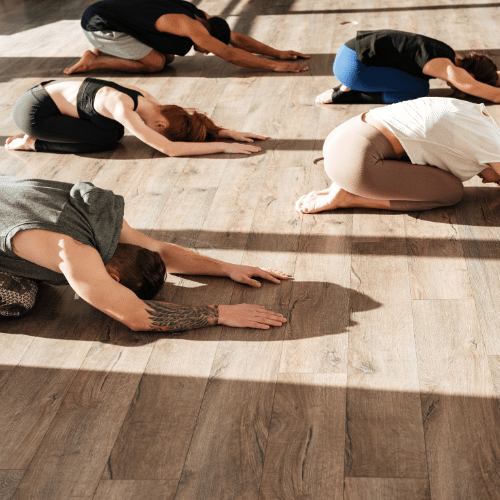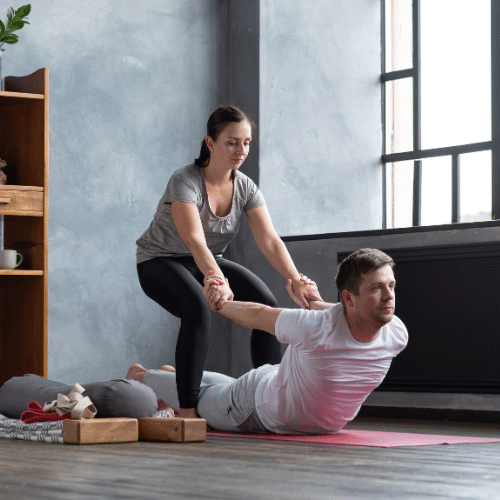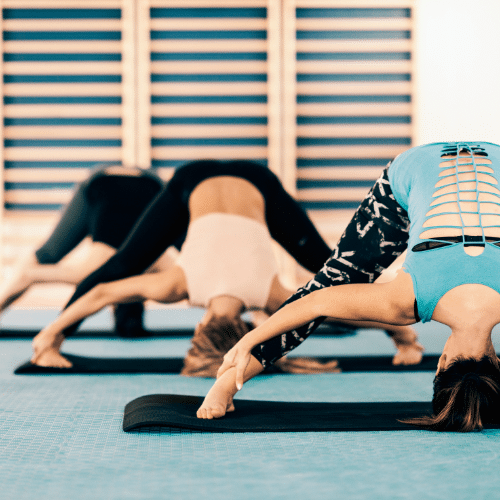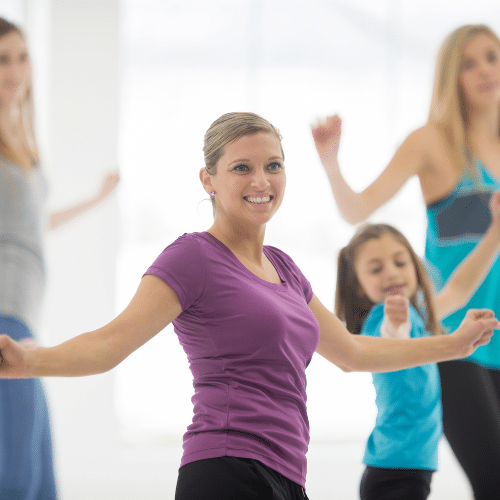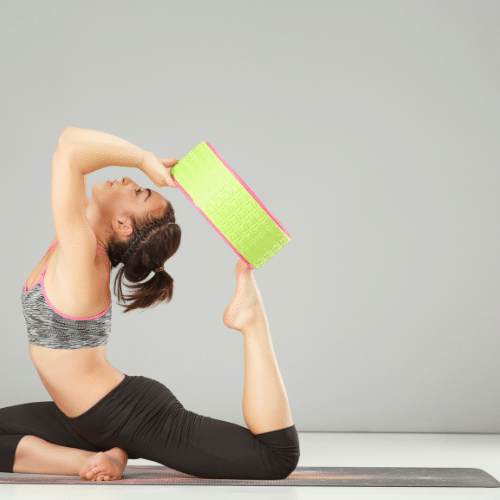Yoga is a form of exercise that many use to clear their minds and bodies from various types of pain and discomfort. As it becomes increasingly popular in the health and wellness community, different tools have also been created to enhance the user’s performance during practice. One good example of this is the yoga wheel.
What is a Yoga Wheel?
A yoga wheel is a circular tool used to boost the efficiency of various yoga poses. It’s a wheel made from cork or plastic. Although it is mostly used as a tool during exercise, it also boosts recovery and relaxation by massaging the user’s back when they perform restorative exercises and poses. It also helps users improve their flexibility and balance. It can serve as a versatile tool as long as the user knows how to properly use it.
What are Yoga Wheels Used for?
Pain Relief Throughout the Body
Pain and discomfort can be caused by a lot of factors. You may not be getting enough physical activity, you may be feeling stressed, or you may have worked your body too hard, among many other possible reasons. No matter the cause, many people have been using yoga as a form of pain relief exercise because of its relaxing and healing properties for the body. Although yoga is already effective by itself, the support of the wheel adds pressure in a way that allows you to stretch further, making some poses more effective in terms of pain relief.
Strengthening the Body
Aside from relaxation, yoga enthusiasts also turn to exercise to help tone and strengthen their bodies. Yoga takes a lot of concentration, strength, and stamina. Incorporating a wheel into your usual routine engages your core and your back. After the wheel has been incorporated into your routine for a while, it can even strengthen your spine. It may take some time to get used to, but once you figure out a routine that works for your schedule and your body, you can enhance your strength significantly using a yoga wheel.
Challenging Yourself
Yoga itself is a challenge, especially if you’re a beginner. You need to train your body to become more flexible and stronger to achieve some of the more difficult poses. That being said, practicing yoga with the addition of a foreign object will definitely take some extra training. After all, doing poses with nothing but your body and the ground is one thing. Having to work with or balance your body on a yoga wheel is a completely different and more challenging story. However, the effects and benefits you gain in the long run will be much more worth It and satisfying in the future.
Benefits of Using a Yoga Wheel
Enhances Flexibility
Yoga wheels allow you to reach new levels of flexibility. Even when you’re doing poses that you’ve mastered, doing them while using a wheel will add a new challenge. They force you to adjust to the added stretch and effort needed to work with it, allowing you to improve your yoga skills. It’s also a great way for you to experiment with new poses. Try testing your flexibility by performing different exercises designed for yoga wheels. Adding this into your routine will make your body more flexible and you’ll be able to perform more challenging poses with ease.
Improves the Quality of Your Breathing
Your yoga wheel can also help you breathe better. This is ideal for anyone who struggles with conditions like asthma. Again, your spine becomes stronger with continued yoga wheel practice. A healthy spine paves the way for your respiratory system to function properly. Once your spine is in good condition, the ventilation within your body also improves significantly. If you need additional support for your lungs, opening up your chest with yoga wheel exercise is a great way to attain this.
Improves Your Balance
It’s a known fact that balance is one of the most important aspects of practicing yoga. Yoga forces you to improve your balance so you can perform its various poses and exercises. Using a yoga wheel can help those who have stability issues. As mentioned before, exercises and poses using the wheel often stimulate the core. Core strength is largely responsible for maintaining balance while performing yoga poses. By training your core with the wheel, you can gain enhanced stability. This allows you to expand your range of poses and exercises without falling over as often.
Less Risk for Injury
When done improperly, yoga exercises, like any exercises, can lead to injuries. Adding a yoga wheel to your routine can reduce the risk of injury. Although yoga wheels are used during sessions to make exercises more challenging, they also serve as an additional pillar of support when performing certain poses. Using a yoga wheel for these stances could lessen the risk of falling or straining your body, so some exercises are arguably easier when performed with the help of a yoga wheel.
Yoga Wheel Exercises for Beginners
If you are interested in trying out a yoga wheel, here are ten beginner wheel poses that yoga enthusiasts are sure to enjoy.
1. Reclining Easy Pose
This exercise is ideal for beginners who want to adjust to their yoga wheel with minimal risk. Start by sitting cross-legged with your wheel behind you. Rest your hands on your knees with your palms up. Breathe in and out steadily as you lean back to press against the wheel and extend your spine over the curve. Continue extending until your head touches the yoga wheel. Continue taking deep breaths and hold the position for as long as you can.
2. Spinal Stretch
This yoga wheel exercise is considered one of the most basic poses for beginners. The spinal stretch can be performed by sitting on the ground and leaning your weight against the wheel. Your feet should be flat against the ground as you position the wheel against the base of your spine. Use the yoga wheel by repeatedly rolling it against your spine in careful but firm motions. You can cross your arms over your head or press your palms against the ground to support your body.
3. Upward-Facing Two-Foot Staff Pose
This exercise is meant to prepare your body for more difficult poses. Start by sitting with your feet facing the yoga wheel. Hold the wheel firmly and take a deep breath before leaning back against it. Slowly raise your hips and extend your arms until they are directly pointing behind you. Carefully begin rolling your spine along the yoga wheel until it is tucked between your shoulder blades. Continue until your arms press against the ground.
The back of your head and neck should be right against the wheel. Your knees should always be in line with your toes. Hold the position for up to 5 seconds before carefully releasing the pose.
4. Half-Pyramid Pose
Begin by kneeling on the ground. One of your knees should be positioned at a 90-degree angle with your foot rooted to the floor. Take the wheel and place it near your front leg, under your thigh. Make sure that your torso is kept upright all throughout. Begin pushing the wheel forward by raising your leg and placing the back of your calf against it. You can stop rolling once the wheel is near your ankle.
Hold the position and take a deep breath. Then extend your spine and release the breath as you move your hips forward. With your back straight, reach your arms towards the wheel and feel the stretch. Hold for up to 5 seconds. Repeat this exercise around 3 times for each leg.
5. Cat-Cow Pose
Start by holding the wheel firmly with both of your hands. From there, slowly adjust your body until you are in a table-top position. Your hands and shoulders should be level with each other, while your legs are perpendicular to the ground. Take a deep breath and lower your navel. After that, arch your shoulders and move your head lower until it touches the wheel. Repeat this process for at least another two minutes.
6. Quadriceps Stretch
This pose requires more balance than other yoga wheel exercises. Start in a tabletop position. First, hold the wheel with your left hand. After that, bend your left knee and carefully put your foot into the wheel. Balance yourself by extending your right arm while still pushing your left foot. You’ll start feeling the stretch as you keep raising your left foot while your left hand continues to pull the yoga wheel down. Make sure your right leg and right hand are firm on the ground to keep you balanced. Hold for 30 seconds and repeat on the other side.
7. Pigeon Pose
This is a slightly more challenging pose, but it offers great relief for your back and spine if done correctly.
Kneel on the ground and place the yoga wheel between your feet. Begin leaning back while extending your arms until you can grab the wheel. Once you can reach it, grab both sides of the wheel and begin rolling it with your hands. You can stop once your head touches the floor or when the position feels too uncomfortable to continue. You should feel a relieving stretch as you hold the position. Make sure to perform this pose carefully and only proceed if you feel that your body can handle it.
8. Wheel-Assisted Plank
This is essentially the same as doing a normal plank, but with the added assistance of a yoga wheel. Place the wheel directly behind you before entering the plank position. Carefully begin placing your feet onto the wheel, one foot at a time. Take your time and don’t rush. Once both feet are resting on the wheel, tighten your core and keep your legs straight to maintain balance. You can hold the position for 30 seconds or however long your usual planks last.
9. Child’s Pose
You can start by breathing in slowly. After that, relax your hips so that you can part your knees and lower your torso until it is tucked between your legs. With another deep breath, extend your arms upward and gaze up. Take another breath and grab the wheel as you lower your body, arms still extended at their highest. Your forehead should be pressed against the floor as you stretch your body further, lowering your chest until you feel a stretch within your shoulders. The balls of your feet should be pressing against your sit bones throughout the entire exercise.
10. Seated Forward Fold Pose
Begin by sitting on the floor with your legs extended. The yoga wheel should be directly in front of you. Bend your knees until your feet are flat against the ground, then take the wheel and place it underneath your legs and against the back of your calves. Grip the wheel securely as you lean your torso forward and scoot your hips back. You may feel a stretch if you have tight hamstrings. If not, then you should easily be able to rest your torso against your legs.
The Bottom Line
A yoga wheel can provide an enjoyable and challenging twist to your yoga experience. It may be difficult to adjust to it at first, but the relief it offers for your back and spine is worth the extra effort. Help your body achieve greater heights by taking advantage of the yoga wheel for your next session!


